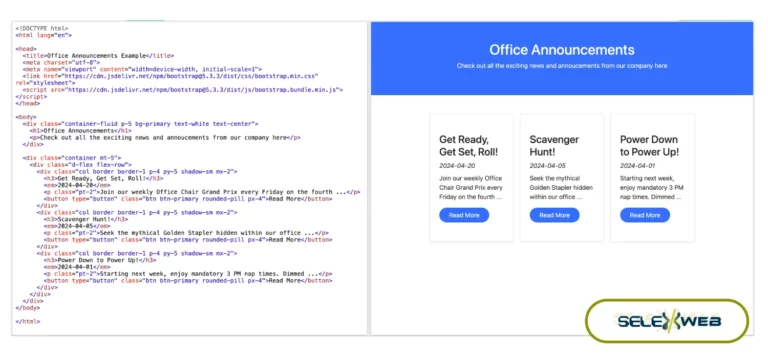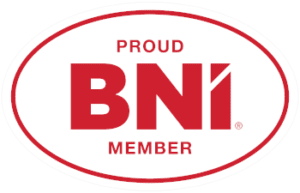Small business owners know that in order to be successful, they need to be able to market their services effectively. A great way to do this is by writing blog posts; but when it comes to that, small business owners often struggle with what to include and how to structure their content. In this post, you’ll learn a simplified approach to writing a blog using an introduction, sub-topics and conclusion. This will help you write effective blog posts that will capture your reader’s attention and help them understand what it is you do and how you can help them.
With the power of content, you can educate prospects or clients about a topic. These can be services, features, or issues you have experienced in the industry. With high-quality content, small businesses can reach a broader audience online since big search engines like Google are always looking for high-quality content for searchers.
The Blog Structure Overview
The structure is the most challenging part for many entrepreneurs. As experts in our own areas, we may feel the need to say a lot, go in different directions or into great detail, often causing confusion to the layperson. That’s why planning is vital. It will help you narrow your focus down to a specific topic and sub-topics. Have a look at the free simplified blog structure template we often use. Click here to see the Google Doc (Make a copy of the file to start working )
The topic is the main idea you will focus on throughout the blog, and sub-topics are items you will explain in the body paragraphs to strengthen your topic.
Writing an Effective Introduction
When you’re writing a blog post, the introduction is key. It is the main topic of your blog post. It’s what grabs your reader’s attention and makes them want to keep reading if it’s of value to them. And it needs to be written for your target audience, focusing on what they care about.
To write an introduction that packs a punch for service-related industries, you can do a few things:
- Start with a question related to the benefits your service offers.
- Use a client story or issues you see in the industry.
- Use analogies to help people understand the value of your services.
- Make a bold statement.
Whatever approach you take, make sure it ties in with the rest of your content.
Writing Each Sub-Topic Item
When writing the body of your blog post, it’s important to remember to focus on each sub-topic item with a specific purpose. You can think of each sub-topic as a “bigger building block” that helps to support your main point.
To help you get started, here are a few tips for writing an effective sub-topic item:
- Start by introducing the topic of your paragraph.
- Then, provide some evidence or examples to help support your point.
- Finally, conclude your paragraph with a brief recap of what you’ve said.
When put together, these ‘smaller building blocks’ will help to create a strong and well-rounded argument for your overall blog post.
Sub-Topic Example (Bigger Building Block):
“There are many benefits to using social media for business. Not only do platforms like LinkedIn and Twitter allow you to connect with potential and current customers, but they also give you a way to share important information about your business.
For example, let’s say you own a small business that provides home-cleaning services. You could use social media to promote a special offer or discount, to announce changes or new services, or even to give tips on keeping a clean and tidy home.
Using social media can reach a wide audience with minimal effort – meaning that your small business can get a big boost from social media marketing.”
As you can see, this sub-topic (bigger building block) item has a clear purpose: to introduce the topic of social media for business and then provide some examples of how it can be used. We have broken it down into “smaller building blocks” paragraphs to help you write it and for viewers’ ease of readability. By following this simple structure, you can ensure that your sub-topic items are concise, helping to keep your readers engaged with your writing.
Write Conclusion
When writing a blog post, it’s important to think about how you want your readers to feel when they finish reading it. You want them to feel informed, but you also want them to feel like they understand what you’re trying to say. You can do this by leaving them with a final thought on the topic.
In your conclusion, you can recap your blog’s main topic and sub-topics and remind your readers why they should care and what they need to do to take action. You can also give your readers a final call-to-action, urging them to visit your service page or contact you for more information. Whatever you do, make sure that your final paragraph leaves your readers feeling satisfied and informed.
My Final Thoughts
Now that you know how to write a blog post for your service-providing business, it’s time to get started. Use the tips and tricks in this post to create high-quality content that will engage and convert your readers. Not only will this help your prospects or clients stay up to date, but you can also reach a boarder audience online through search engines. We advise clients to invest in high-quality content as part of our SEO strategies, check out our SEO services page to learn more. If you need help getting started with content marketing or overall search engine exposure, contact us, and we will connect you with a professional on our team who can help you develop a content strategy and create blog posts that will help you achieve your business goals.
Additional Tips:
- Always use an active voice, it helps readers understand you are in control of your writing and trust what you’re saying.
- Avoid industry jargon as much as possible to increase readability.
- Set a maximum word count for each sub-topic and paragraph. This will help you write a paragraph concisely.
- You don’t have to follow the guideline exactly. Once you get comfortable, bring your own flavour. Writing is an art.
- For Grammar help, use Grammarly to help you with common grammar mistakes.
- For Content ideas and search engine optimization, check out How to Integrate Keywords in Blog Posts for Maximum SEO Value.
- Finally, if you have the budget, I recommend working with a Content Marketing Specialist as they know how to take your initial throughs to the next level.
Hopefully, this helps! I will keep updating this article as we learn more and have additional free resources to share.









